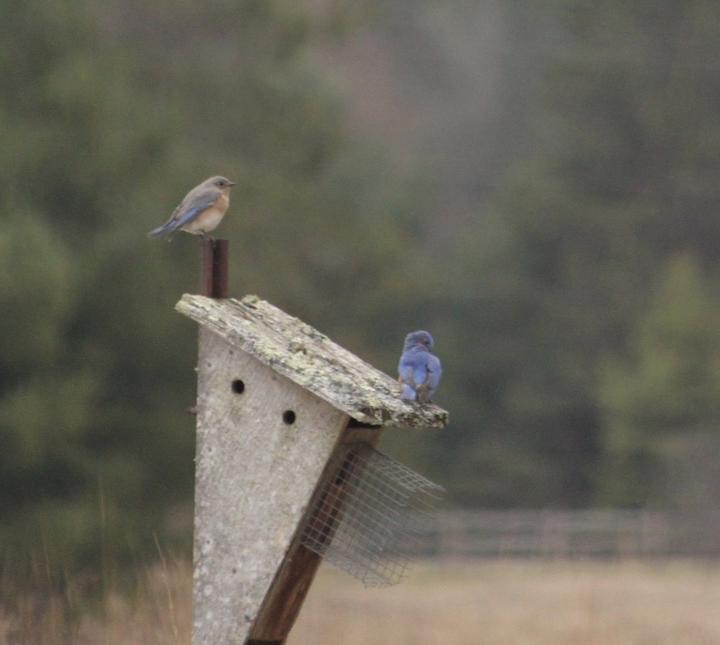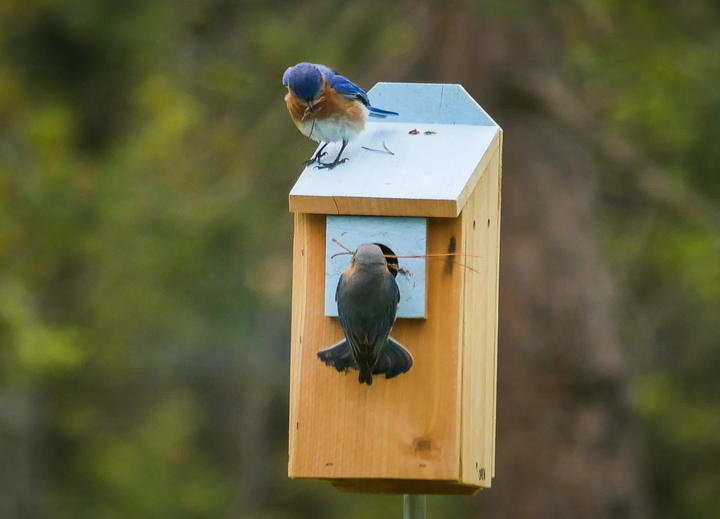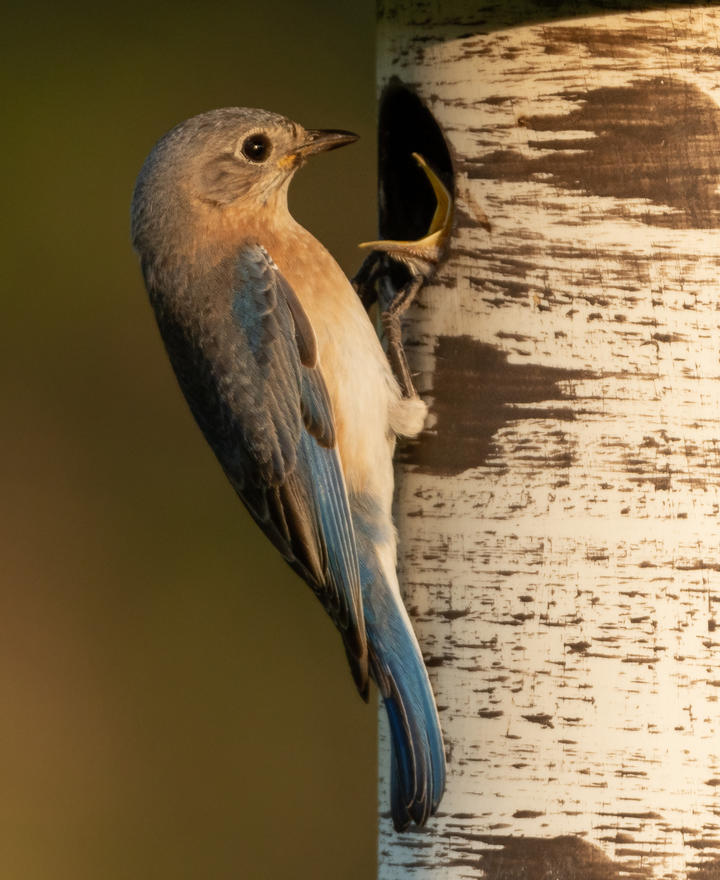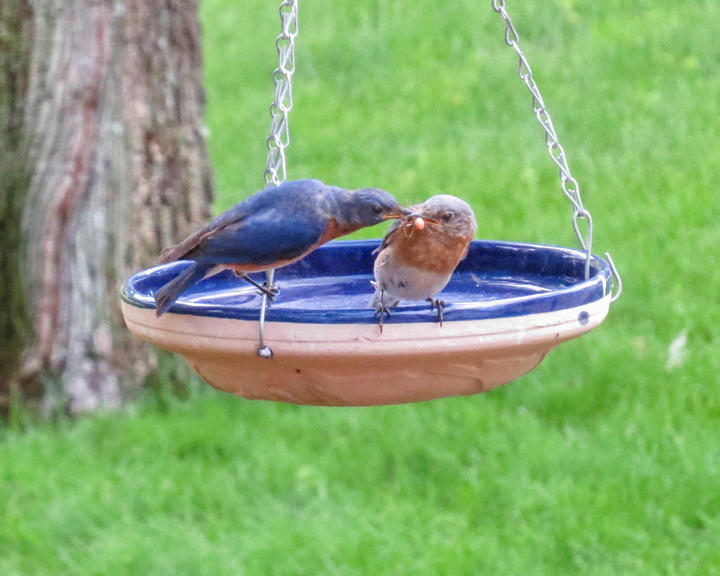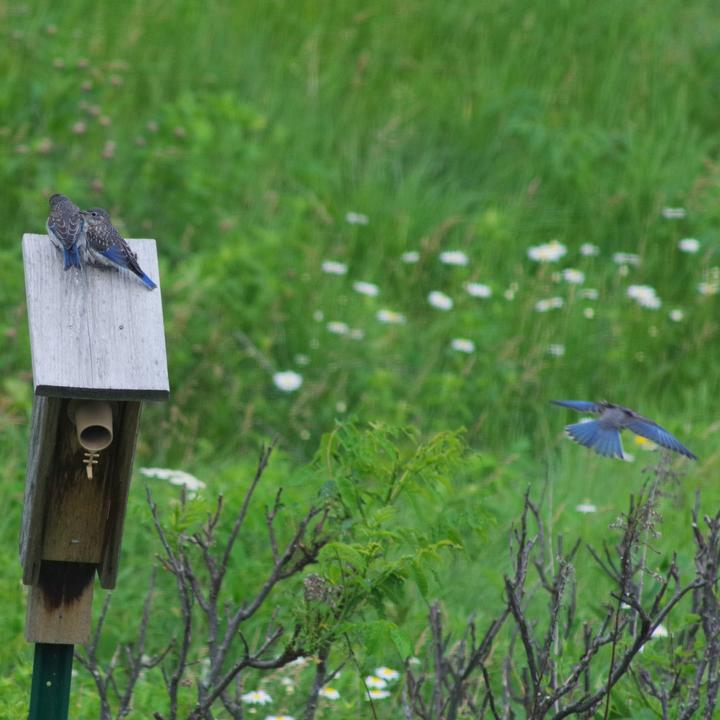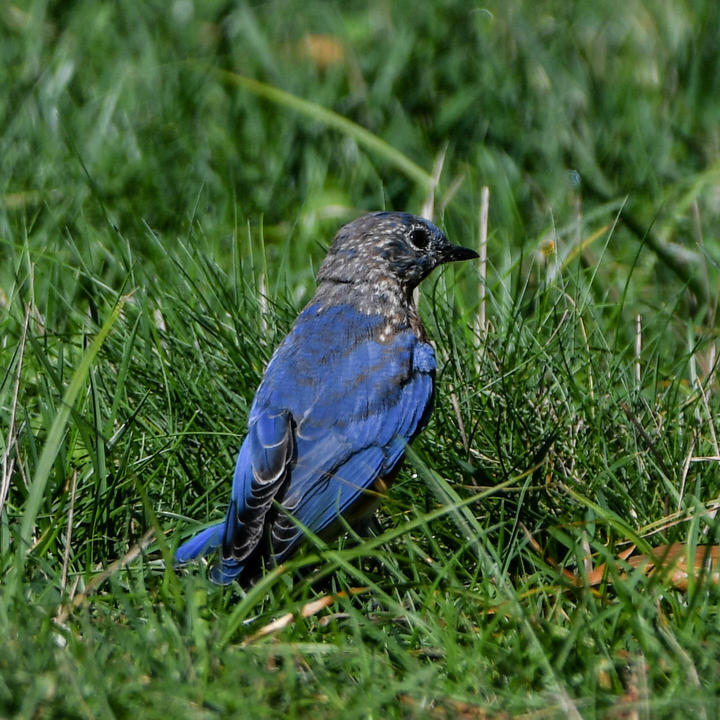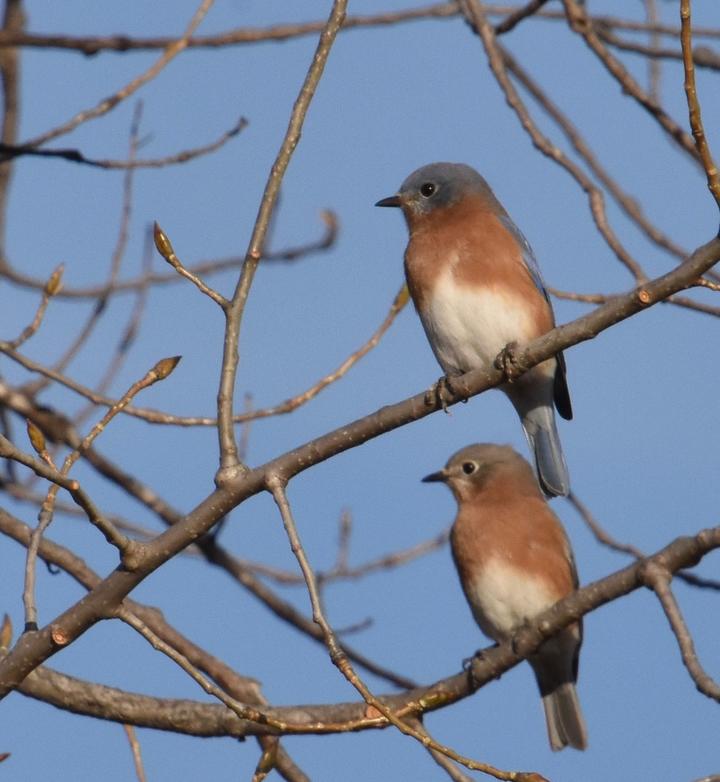More names for this bird
Anishinaabemowin: Ozhaawashko-Bineshiinh
The Dakota and Anishinaabe were among the earliest people to name Minnesota’s plants and animals, as well as to understand them in relation to Minnesota’s climate and seasons. Those original names are still in use, and several are included on the Season Watch website. However, complete translations were not available.
Latin (or scientific name): Sialia sialis
The scientific community has a convention of assigning agreed-upon Latin names to every kind of organism. Using scientific names helps people communicate confidently about the same organism and organize lifeforms based on how closely related they are.
Page contents
About the eastern bluebird
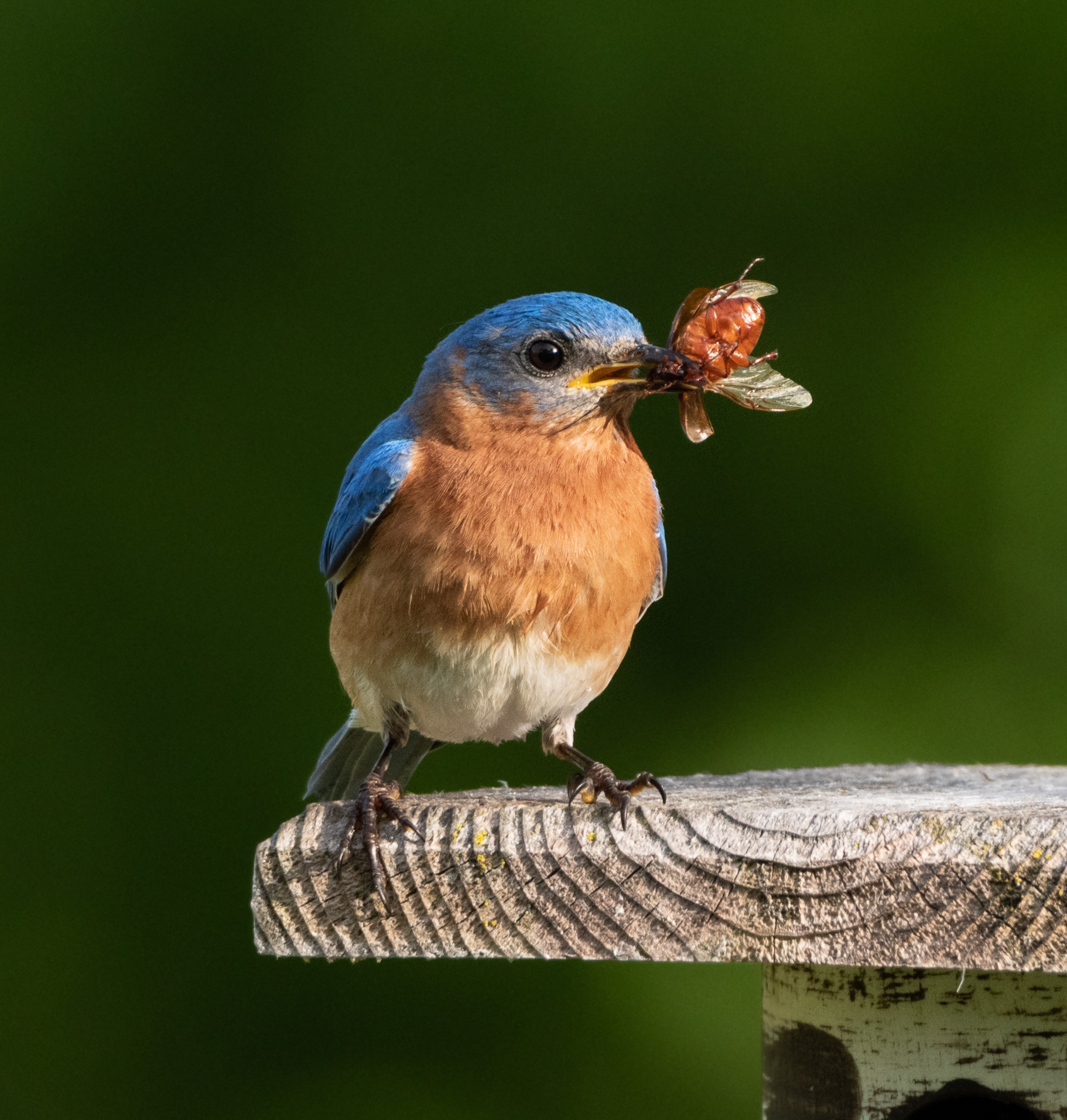
May 29, 2019, Ramsey County, Minnesota
Photo © ComoHabitat, some rights reserved (CC-BY-NC-ND)
iNaturalist observation
About the eastern bluebird
- The eastern bluebird is a songbird slightly smaller than a robin. It has a rusty throat and breast, blue above, with the female being a bit grayer.
- For much of the year their diet consists of insects like grasshoppers and crickets caught on the ground. In winter, they eat a variety of fruits including blueberries, hackberries and juniper berries.
- Bluebirds nest in tree cavities or nestboxes.
- The female bluebird incubates her eggs from eleven to nineteen days. Young leave the nest seventeen to twenty-one days after hatching.
- Fun fact: Despite their small size, bluebirds can capture and eat larger prey items such as shrews, salamanders, snakes, lizards and tree frogs.
- Eastern bluebirds migrate. Expand the "Migration animation" section below to learn more.
Migration animation
Migration animation
Click the full-frame icon (lower right corner of video) to play at full size.
More about eBird's abundance animations
eBird data from 2006-2020. Estimated for 2020. Fink, D., T. Auer, A. Johnston, M. Strimas-Mackey, O. Robinson, S. Ligocki, W. Hochachka, L. Jaromczyk, C. Wood, I. Davies, M. Iliff, L. Seitz. 2021. eBird Status and Trends, Data Version: 2020; Released: 2021. Cornell Lab of Ornithology, Ithaca, New York. https://doi.org/10.2173/ebirdst.2020
Visual guide to phenology
Watch for changes in bluebirds' presence (or absence), abundance, and behaviors at different times of year. Also, pay attention to when young-of-year fledge and develop.
Note to observers
This page explains general clues to watch and listen for when observing eastern bluebird phenology. However, this page does not explain how to identify this bird or collect data in a standardized way.
- For help with identification, see The Cornell Lab's All About Birds.
- For guidance on collecting data, see Nature’s Notebook.
Audio resources
Visit All About Birds for recordings of songs and calls by eastern bluebirds.
Graphs and historical data
Note: The Orientation Center provides a map, as well as information on reading graphs; interpreting summary statistics, who collected the data and how; and how to download datasets for independent exploration.
First seen
- Earliest: March 15 (occurred in 2012)
- Average: April 1
- Latest: April 29 (occurred in 2013)
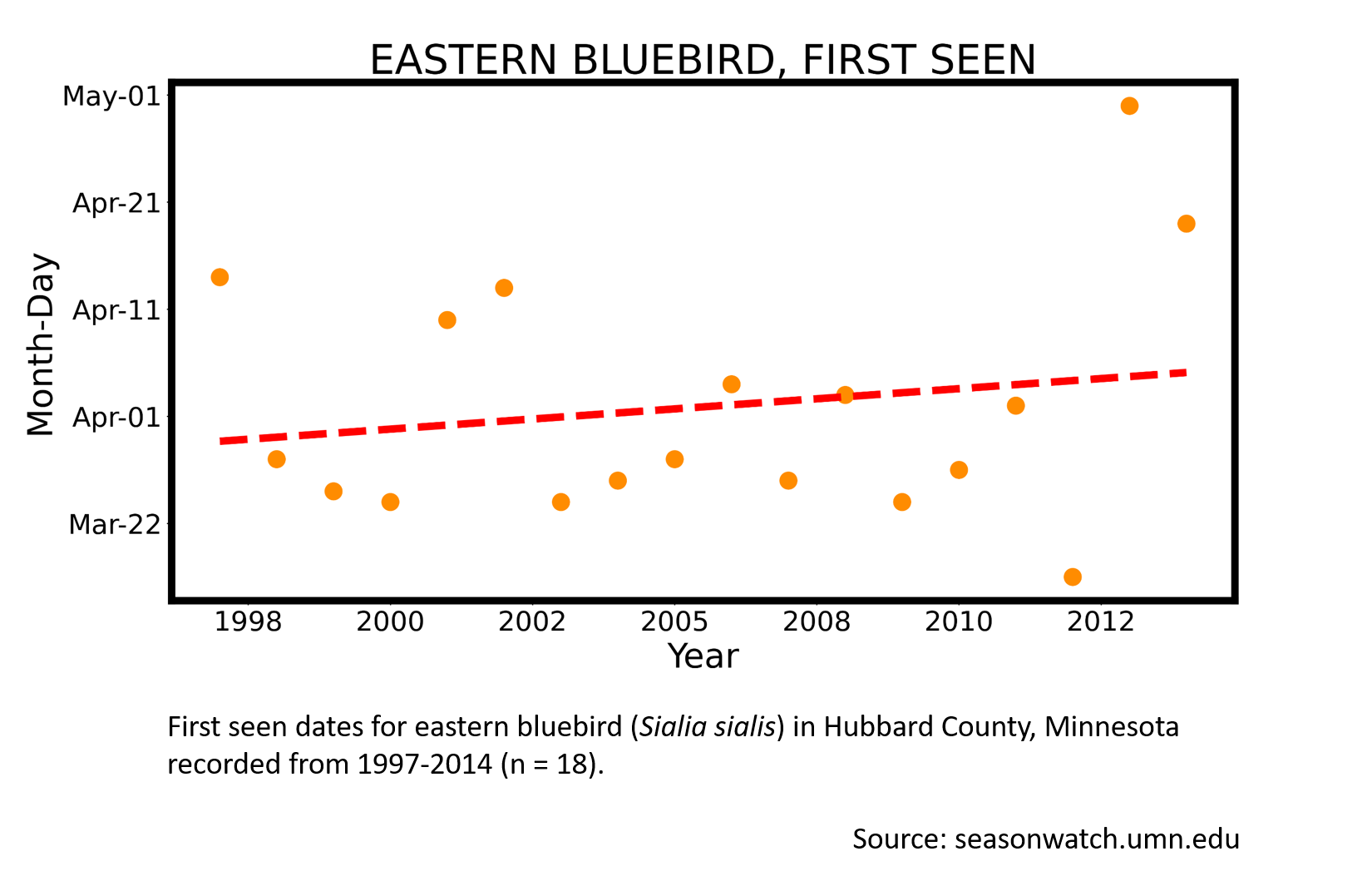
Arrival
- Earliest: February 16 (occurred in 1985)
- Average: March 17
- Latest: April 3 (occurred in 2013)
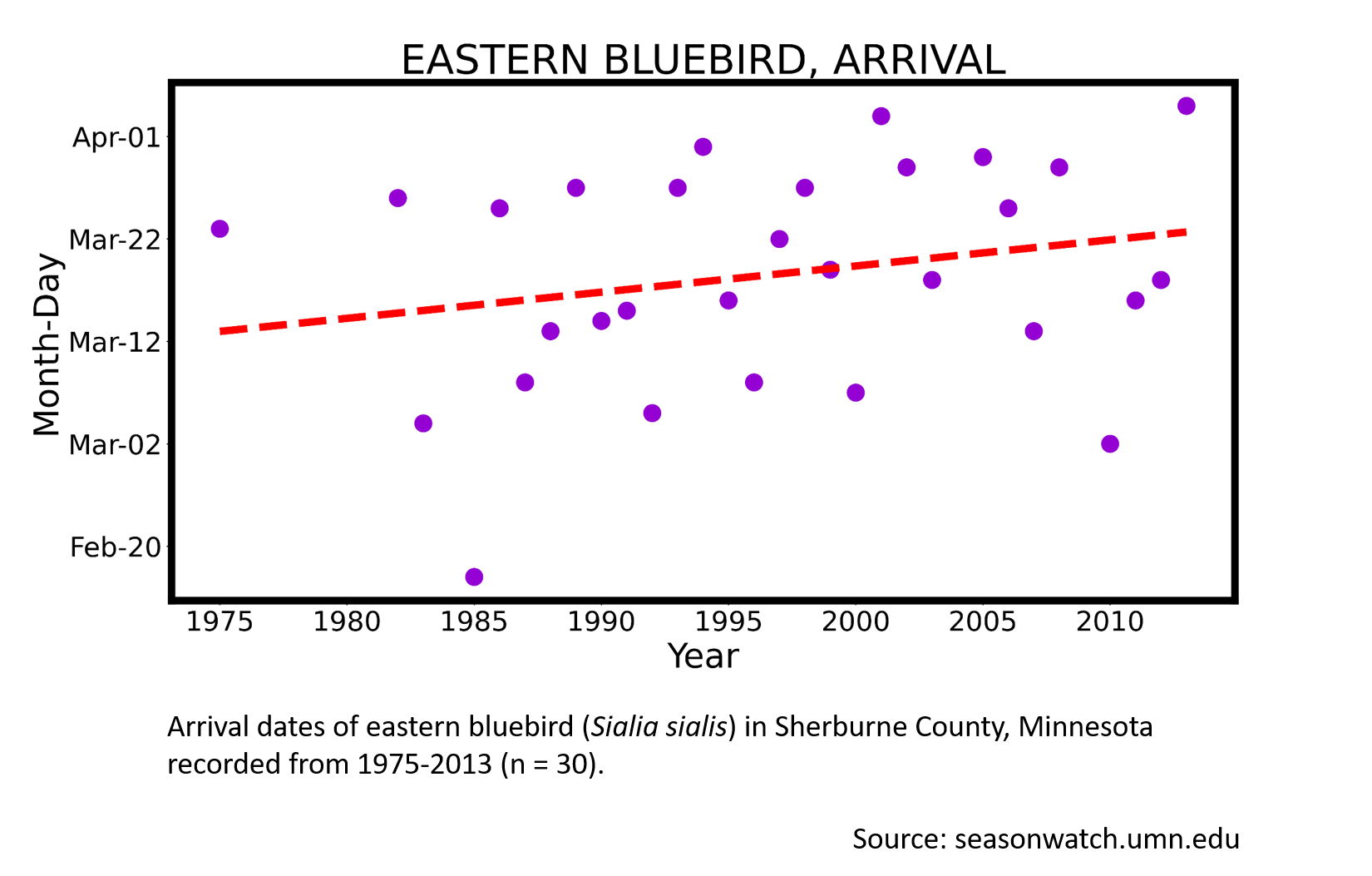
More resources
Keep exploring Season Watch
Keep exploring Season Watch
Co-author: Jayme Hogan, Minnesota Master Naturalist

